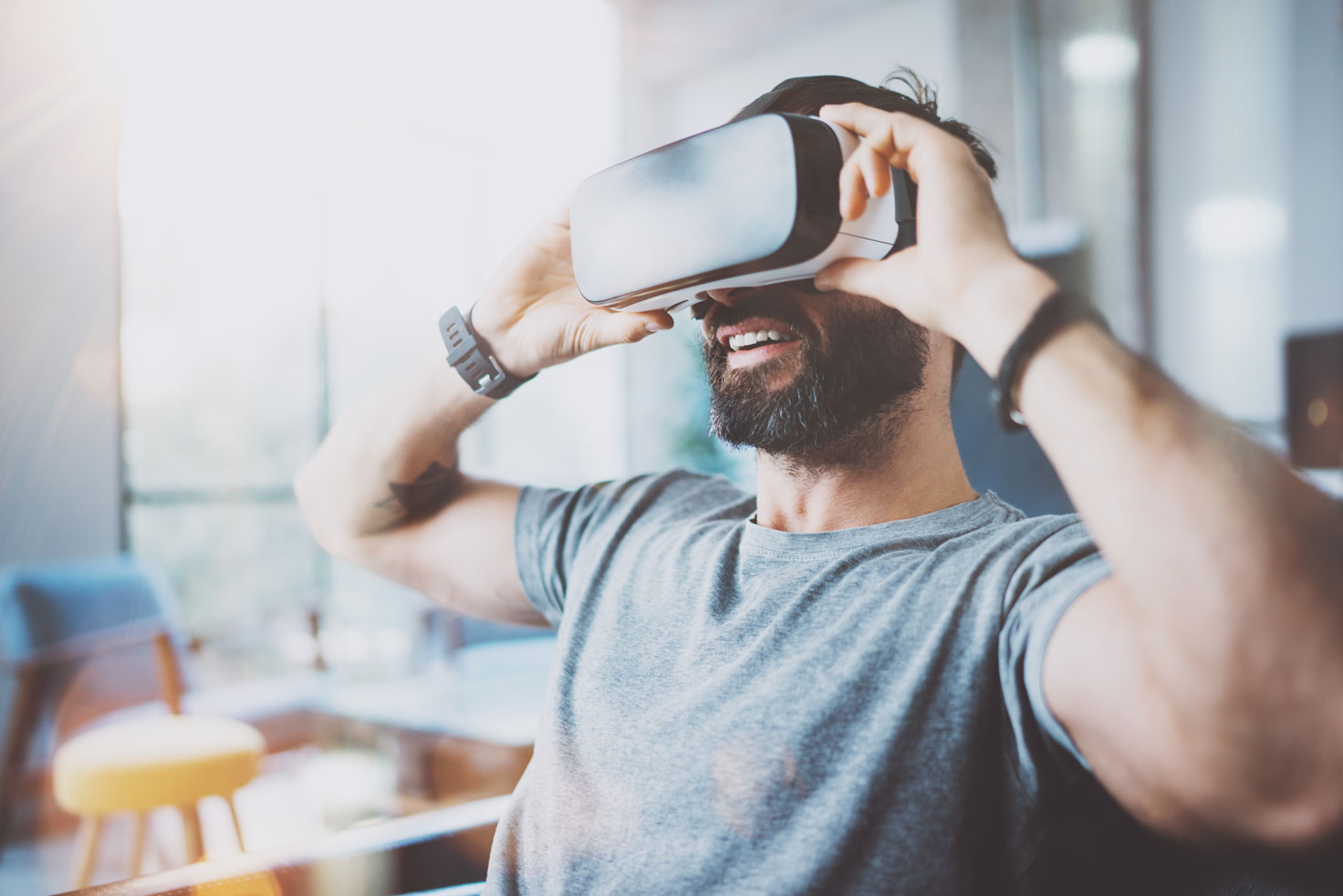Virtual Reality (VR) has been around for some time. Its magic is in the 360-degree simulation, accomplished with a wrap-around headset, that transports the user into an immersive “other worldly” experience.
While content is still somewhat limited – often related to the gaming realm – there is some curiosity around other “real world” applications. For example, is it possible to host a VR conference where global participants can explore content and engage in training?
Additionally, how is VR being used in marketing and advertising?
VR is a robust topic, and while we at One Floor Up have produced some content related to this technology (such as these videos on XR10 and Site Vision, we’re very much in the experimentation and learning phase on this topic as well. But we do enjoy dabbling in this world. In fact, we recently set up a VR corner in the One Floor Up office for anyone who wants to take the goggles out for a spin!
Many people seem reluctant to give it a try. Perhaps it feels like too much of a disconnect from reality, or from the people around you. But, please consider this an open invitation to come check it out! We promise to not mess with you (too much!) while you’re orbiting the earth or exploring the ocean deep.
So, back to VR’s other “real world” applications. We’ve all been staring at our screens a lot more in recent years, so it would make sense that we’re asking – how can we make this more interesting?
If we were going to create a VR conference for corporate training, we’d start by creating the virtual space in Cinema 4D (or a similar program), and then bring the space into a game engine like Unreal Engine or Unity. Game engines take advantage of modern graphics cards for real-time rendering, which allows users to interact with objects in real time, rather than waiting for each frame to render. They make some sacrifices in quality to be able to do so, but they have come a long way in recent years.
Companies like Second Life and Meta have been trying out virtual worlds for some time to make remote meetings, conferences and collaborations more interesting (minus the headset). There seems to be some level of adoption among educational institutions, so that students can tour campuses (remotely), network (as an avatar) and augment their learning experience in other ways.
In terms of marketing and advertising, some brands are taking the VR plunge. Hyundai recently created virtual worlds using the gaming platform Roblox where players can drive Hyundai vehicles NEXO and IONIQ 5, explore future mobility solutions, and immerse themselves in many virtual experiences available in the metaverse.
Recently, we interviewed Valerie Carlson (for a different project – more on that to come). Carlson is the Global Chief Creative Officer for Critical Mass, a Canadian digital experience design & marketing agency with global reach. Based on her work in VR, she shared these insights with us:
One of our bigger projects right now is figuring out how to show people the future of vehicles. AR and VR work really well for that. It’s a world you can be transported to even though it doesn’t exist. It pulls together a combination of learning, future vision and reality. […]
Often, our clients just want us to show their product. We need to educate them to understand that when someone puts a headset on, they want to be transported. They don’t want to see things that exist in the real world. […]
Concerning AR and VR, I always tell people that mixed reality is where we’re headed. VR is really challenging because you have to put something on your head. It’s sweaty. It’s uncomfortable. Mixed reality uses augmented reality to let you — without a headset — play with something or have an experience that’s totally unique.
If you want to understand new technology, you need to play with it. You need to have the headset. You need to play with augmented reality on your phone. You need to get to know the space. And that’s the best part about this job: all of the different phases of technology that I’ve seen over the last 20 years have given me the ability to play, to meet new people and to join in communities — to expand my horizons around the types of things that I create.
While this is far from a comprehensive look at the state of VR, my hope is that this information sparks new insights (or maybe new questions) about future projects and collaborations. We’re certainly not betting the farm on VR – as this recent headline suggests that some people are doing (Texas Man Puts Life-Savings Into Buying Virtual Property).
However, at One Floor Up, we’re always looking to expand our knowledge and explore technology, and it’s questions like these that help us do that. So, please, let us know if you have VR / AR related questions. We’re happy to discuss. With or without an avatar!


